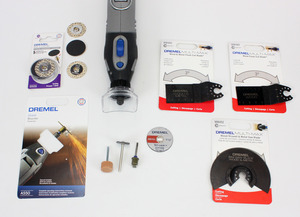This article is one of a series called Spanish Tidbits for Beginners. Here we will talk about the basics of nouns and the definite and indefinite articles that go with.
Nouns
In Spanish, nouns have both gender and number. Number, as in English, refers to whether a noun is singular or plural.
box → boxes
car → cars
Gender, however, is not something typical to our minds in English. The only time we care about whether a noun is masculine or feminine is when we’re talking about a person or an animal.
lady, gentleman, boy, girl, king, queen, cow, bull, ewe, ram, actor, actress
A recognizable situation where we assign a gender to an English noun that isn’t a person is in accepted personifications of things, such as calling a ship, fortune, or victory she instead of it. If we can accept that, it might help with transferring this concept to Spanish.
In Spanish, a noun is either masculine or feminine. This may be odd to you, therefore, my suggestion is to simply accept it as true. Or, you might think about how we call ships she, if that helps. There are hidden linguistic reasons for why nouns take which gender, but they’re not helpful to the average speaker.
One important thing to consider is that there is not usually a way to determine which gender a noun is by its meaning, but rather for the structure of the word itself. In other words, a noun is not necessarily feminine if used by females. For example, the word vestido, meaning dress, is a masculine noun, even though dresses are used by women.
Although there are many exceptions, generally words ending in –o are masculine and words ending in –a are feminine. There are other patterns, too, but these two are the most common. As for number, usually a word is made plural by adding -s to words ending in a vowel and -es for those ending in a consonant.
chicoboy → chicos boys
chica girl → chicas girls
Not all words have masculine and feminine counterparts like this set, which are given for their typical characteristic of gender. There are many, though, which do have masculine-feminine counterparts. Little by little as you pick up words, you can learn the suffixes to help you know which is which.
Definite and Indefinite Articles
In English, the definite article is the and the indefinite articles are a and some to indicate a limit of a particular noun. In Spanish, both definite and indefinite articles have both number (singular and plural) and gender (masculine and feminine) and correspond to the number and gender of the nouns they modify.
Definite Articles: “the”
Masculine Singular el
Feminine Singular la
Masculine Plural los
Feminine Plural las
Indefinite Articles: “a” or “some”
Masculine Singular un
Feminine Singular una
Masculine Plural unos
Feminine Plural unas
Below are some examples of masculine, feminine, singular, and plural nouns. The first follow the typical pattern, the second do not. What definite and indefinite articles would you use for each? Think about it from what you learned in the lesson, then check to see if you were right beneath the list.
Masculine Singular maestro, festival
Feminine Singular caja, canción
Masculine Plural amigos, días
Feminine Plural hermanas, flores
Here are the same nouns with definite and indefinite articles. How did you do?
el maestro, un maestro
el festival, un festival
la caja, una caja
la canción, una canción
los amigos, unos amigos
los días, unos días
las hermanas, unas hermanas
las flores, unas flores
Using the Dictionary to Explore Nouns
If you don’t have a dictionary, I strongly recommend you pick one up. They are an invaluable resource for all learners of Spanish, no matter what level.
When looking up a noun in the dictionary, you can find out if it is masculine by the letter m by the entry, and if it’s feminine by f. Sometimes the m or f will be inside parentheses.
Once in a while you will find a word that can be either masculine or feminine, depending on the country or region it’s in. Your dictionary may or may not tell you. For example, you might see an entry that says Mex to show that it is the Mexican use of the word.
Sometimes a dictionary will also give the plural of the noun, especially if it is quite different from the singular. For example, the word meaning shoe heel is tacón in the singular, but the dictionary shows that it is tacones in the plural, and doesn’t have an accent mark.
Here is a dictionary entry of a noun to examine for its parts.
cesiónnf, pl cesiones : transfer, assignment
First we see the noun entry, in the singular. Then the label shows that it is a feminine noun, and the plural is cesiones without the accent mark we read in the singular. Then we see the English translation, followed by an idiom that the word can have, including its translation.
So, using the example above, we can write this noun in the singular and plural, with definite and indefinite articles.
la cesión, una cesión → las cesiones, unas cesiones
By the way, agua, meaning water, is a feminine noun (which would also take a feminine adjective). The dictionary would identify it as a feminine noun. But, in the singular, we need to say el agua. This is because we do not want to say the a sound twice in a row.
Exercise: Nouns and Their Articles
For this exercise you will need a Spanish-English dictionary. For the singular words below, find out if they are masculine or feminine. Then write it below giving the singular definite article, the plural definite article, the singular indefinite article, and the plural indefinite article. The first one has been done for you. (Remember to add these words to your vocabulary as you go!)
carro (car)
el carro, los carros, un carro, unos carros
1. cama
2. reloj
3. cuarto
4. bicicleta
5. día
6. libro
7. parque
8. madre
9. perro
10. casa
Answers: 1) [bed] la cama, las camas, una cama, unas camas; 2) [clock, watch] el reloj, los relojes, un reloj, unos relojes; 3) [room, quarter] el cuarto, los cuartos, un cuarto, unos cuartos; 4) [bicycle] la bicicleta, las bicicletas, una bicicleta, unas bicicletas; 5) [day] el día, los días, un día, unos días; 6) [book] el libro, los libros, un libro, unos libros; 7) [park] el parque, los parques, un parque, unos parques; 8) [mother] la madre, las madres, una madre, unas madres; 9) [dog] el perro, los perros, un perro, unos perros; 10) [house] la casa, las casas, una casa, unas casas.
Reference
Haraty E. M. (2003). Merriam-Webster’s Spanish-English dictionary. Springfield, MA: Merriam-Webster.



